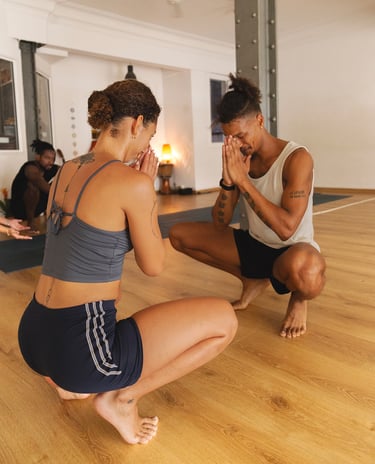Mobility & Stretching Are Your Foundations
Mobility and flexibility are more than “nice to have” — they are the foundation of healthy movement, longevity, and freedom in your body. Stretching and mobility work aren’t separate from strength or cardio: they enable them. And active movement is the bridge that makes mobility real, alive, and lasting.


Mobility vs Flexibility: What’s the Difference?
Flexibility is how far a muscle or tendon can stretch (its length potential).
Mobility is how well you can control that movement through a joint’s full range of motion — strength, stability, coordination included. (Flexibility is one piece of the mobility puzzle.)
You might be flexible in your hamstrings, but if your hip or core can’t support the motion, your mobility is limited. That’s why active movement (not just passive stretches) matters.
Why Investing in Mobility & Stretching Changes Everything
Injury Prevention & Joint Health
Stiff, tight muscles pull joints into compensations. Over time, that breeds pain, misalignment, strain. Regular mobility work helps joints move freely, reducing wear and tear.Improved Performance
Better mobility means more efficient movement patterns. Squats deeper, lunges smoother, lifts cleaner. Your strength and endurance shine when your body isn’t fighting its own restrictions.Better Circulation & Recovery
Stretching and movement improve blood flow, deliver nutrients and clear waste from muscles and joints. It helps reduce post-exercise soreness.Posture, Balance & Daily Ease
As we age or sit more, mobility shrinks. This leads to aches, imbalance, limited movement. Stretching helps maintain posture, reduces tightness in neck, hips, chest — the commonly “stuck” zones.Mind-Body Connection & Stress Relief
Stretching invites presence. You feel into your body, sense where tension is, breathe into it. Movement + stretch = balance for body and mind.
How to Make Mobility & Stretching Part of Your Life
Here’s a practical blueprint you can try this week:
1. Warm it up first
Never stretch cold. Do 3–5 minutes of light movement (walking, gentle joint circles, dynamic swings). This warms tissues and primes them.
2. Use dynamic stretches before activity
Move your limbs through controlled motion — leg swings, arm circles, hip openers. This awakens mobility for what’s coming.
3. Do focused mobility sessions / flow
Set aside 5-15 minutes to move with intention:
Joint circles and mobility drills (hips, shoulders, spine)
Soft “flowing” stretches (move in and out, breathe)
Myofascial release (foam roller, massage balls) to ease restrictions Penn State Sites+2Banner Health+2
4. Static stretching / hold & breathe
After your workout or at the end of the day, hold stretches (30 seconds or more) for major muscles — hamstrings, calves, hip flexors, chest, back. Go to the edge (mild tension), not pain.
5. Frequent micro-mobility breaks
Throughout the day, especially if you sit:
Stand, rotate your spine, roll shoulders
Gentle calf and ankle mobilizations
Neck side bends / gentle head turns
These small bursts reduce tightness before it builds.
APE Community Moves: Real Examples
A member who sat at a desk all day started doing 3 minutes of ankle + hip circles every hour. Within weeks, knee discomfort faded and movement felt freer.
Another integrated a “morning mobility flow” (sun salutations + joint work). She says it changed how her whole body feels — less stiffness, more presence, smoother movement throughout the day.
Your Mobility Challenge (Today)
Warm: Jog in place or march 2–3 minutes.
Dynamic: Do 10 leg swings (each leg), 10 arm circles (each way).
Static: Hold a seated hamstring stretch or chest opener for 30 seconds.
Micro: Every hour today, stand and rotate your spine 5 times + shrug rolls.
Don’t do it all at once. Start small. Be consistent.


